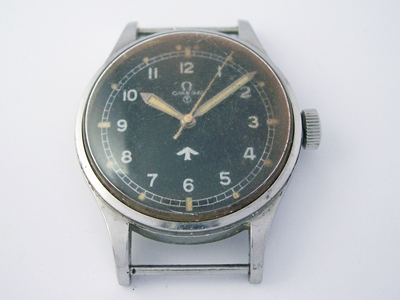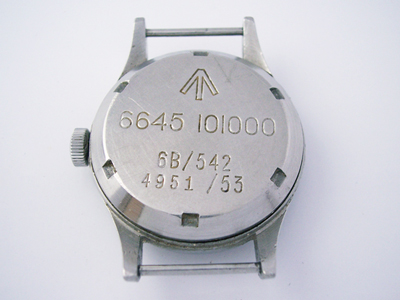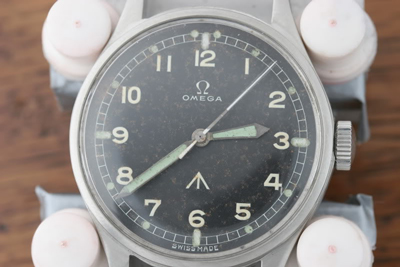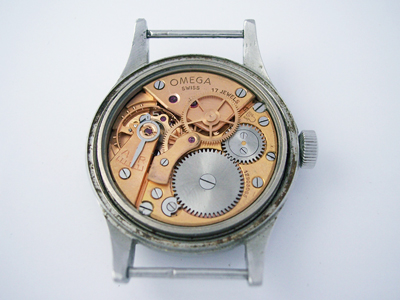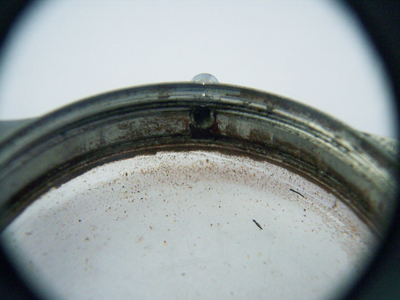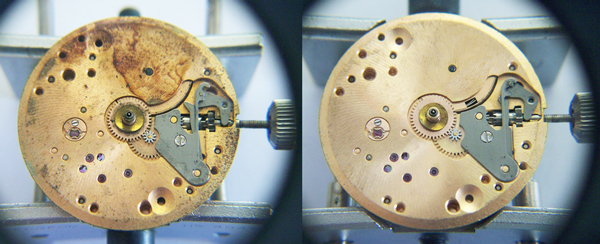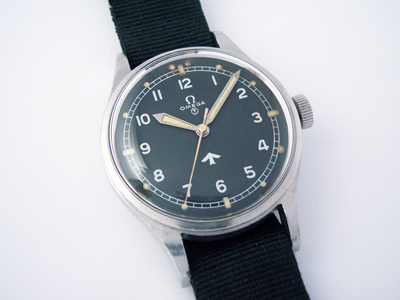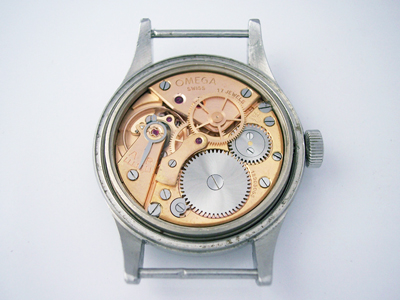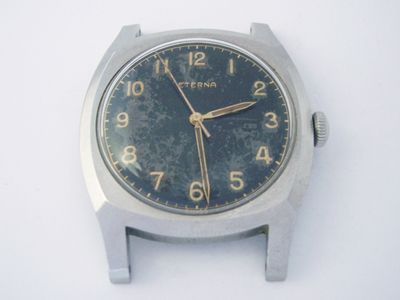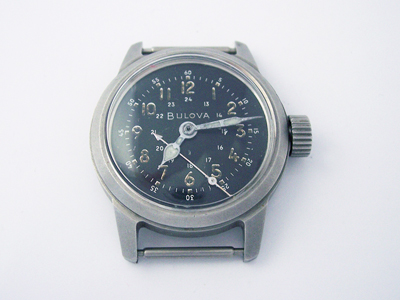Another military watch on the blog, this time an Omega ’53.
(Click pictures to enlarge)
Omega were one of a number of watch manufacturers that produced timepieces for the British Military. According to official records, Omega supplied around 110,000 watches to the British Military during their partnership, the watch in this post being one of the models supplied to the RAF (Royal Air Force).
This model is best known as the “Omega ’53”, so named because it was only issued for one year – 1953, making it one of the more collectable military watches. Turning the watch over, the now familiar military designation numbers are on the caseback, and the bottom line shows the serial number and year of issue.
You will also see these watches referred to as either a ’53 TA, or a ’53 FA, the two letters standing for “Thin Arrow” and “Fat Arrow” respectively. These watches were originally produced with radium filled figures and hands, and the Broad Arrow symbol was printed on the dial in a thin script, hence the name “Thin Arrow”.
In the early 1960’s the MoD started to withdraw from service all timepieces with radium hands and dial markers to replace the radium with non-radioactive tritium lume. As part of this process the dials were all stripped and repainted, and this time the Broad Arrow symbol was printed in a much heavier script, or “Fat Arrow”. (Comparing the two watches you will see that the subject of this post is obviously a ’53 FA.)
The watch arrived in running condition, but had seen better days as the dial was barely visible through the stained crystal. Opening the watch and removing the protective anti-magnetic/dust cover, revealed the movement, a manually wound Omega cal. 283.
A crystal that was too small had been fitted at some time in the past which had failed to make a watertight seal, and over the years water had seeped past the crystal and into the watch.
With the watch removed from the case, looking inside revealed the extent of the damage; the whole area around the crystal had rusted, and the dust/residue had worked its way onto the inside of the crystal – I can only conclude that the old steel tension ring had completely disintegrated here, as there was a lot of rust and very little damage to the case itself.
Aside from a little staining to the lume, the dial was largely unaffected, but when removed there was significant staining on the dial side of the movement. Thankfully, none of this was permanent and just needed careful cleaning.
Thankfully, the rust damage hadn’t penetrated any further, and the rest of the movement was in pretty good shape. It obviously hadn’t been serviced for quite some time, so after a routine service things were looking much better.
The remainder of the rust was removed from inside the case, the dial cleaned, and the correct sized tension ring crystal was fitted to complete the job.
Rich.
** Many thanks to Stephen Brown for letting me feature his watch on the blog. **

